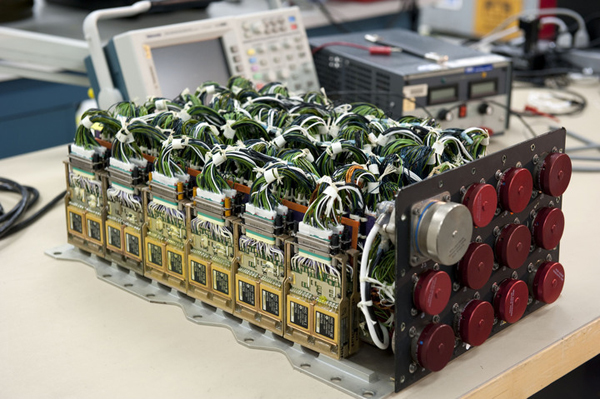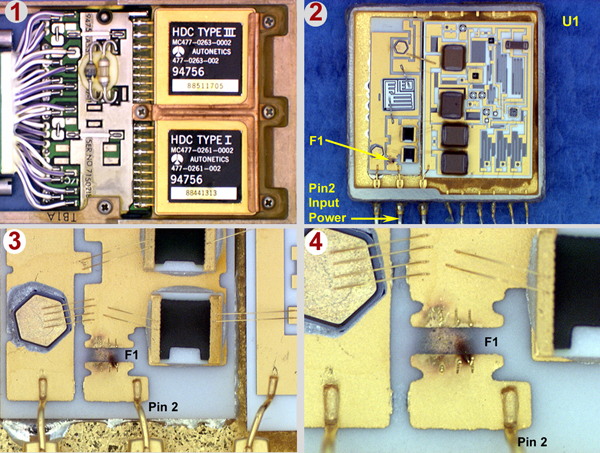Shuttle launch slips to at least May 16
Editor's note...
CBS News
KENNEDY SPACE CENTER, FL--Launch of the shuttle Endeavour, grounded April 29 by an electrical glitch in the ship's hydraulic system, will be delayed until at least May 16 pending additional troubleshooting and repairs, NASA managers said Friday.
Engineers have not yet pinned down the cause of the short circuit that vaporized fusing in a heater control power switch, but a replacement power switching box has been installed and NASA managers have approved a plan to replace wiring between the box and the heaters in question to clear the way for a second launch attempt.
During work to install the new wiring, engineers noticed a crimped cable in a wiring bundle, officials said Friday, and additional tests were planned to find out if that might be the cause of the initial short. NASA managers plan to brief reporters on the status of repairs and overall launch processing Monday.
Going into Endeavour's launch campaign, mission managers had been holding open an option to extend the flight by two days to give the shuttle crew time to help out with needed station maintenance. The idea was to add the extra days to the mission after Endeavour docked with the station.
But on Friday, NASA made that official, extending the flight to 16 days to eliminate multiple timelines and ease flight planning.
For a launch at 8:56 a.m. EDT (GMT-4) on May 16, Endeavour's countdown would begin around 7 a.m. on Friday, May 13. The shuttle would dock with the International Space Station around 6 a.m. on May 18, undock around 11 p.m. on May 29 and land back at the Kennedy Space Center around 2:30 a.m. on June 1.
Complicating mission planning, three of the space station's six crew members -- Dmitry Kondratyev, Paolo Nespoli and Catherine Coleman -- are scheduled to return to Earth May 23 aboard a Russian Soyuz spacecraft. Preparing for undocking will require sleep shifting that will put the station and shuttle crews on different schedules.
The primary goals of Endeavour's flight are to deliver a pallet of spare parts and to install a $2 billion particle physics experiment on the station's power truss. The Endeavour astronauts also plan to stage four spacewalks to perform critical maintenance, but the launch delay is expected to result in a major flight plan revision and the EVA schedule is not yet clear.
Endeavour was grounded during the final hours of a launch countdown April 29 when one of two "strings" of fuel line heaters used by one of the shuttle's three hydraulic power units failed to power up normally. While the system can safely operate with a single string, a subsequent failure could result in a fuel line rupture, knocking auxiliary power unit No. 1 out of action and possibly contaminating the aft engine compartment with toxic hydrazine.
At the time of the failure, engineers believed there were three possible explanations: trouble with a fuse panel in the shuttle's cockpit that routes power to the APU system; a problem with the aft load control assembly, an electrical distribution box upstream of the heaters; or trouble with downstream heaters or thermostats.
Subsequent testing showed the cockpit fuse panel was working normally and that commands were reaching ALCA No. 2 as required. Additional tests indicated the thermostats in question were healthy but not getting power from the distribution box. As a result, ALCA No. 2 was removed from avionics bay No. 5 in Endeavour's aft engine compartment for a detailed failure analysis.
Engineers quickly found vaporized fuse elements in a so-called "hybrid driver" circuit responsible for routing power to APU 1's B-string fuel line heaters. But it was not immediately clear whether the blown circuitry was the result of a problem inside the power box or the result of a short in external wiring.
At launch pad 39A, meanwhile, a replacement ALCA was installed, but fuel line heater power was not immediately reconnected to make sure whatever caused the initial problem did not damage the replacement box.
Engineers met Thursday and discussed three options: replacing the wiring between ALCA No. 2 and the heater thermostats; replacing all the wiring, thermostats and heaters downstream of ALCA No. 2; and pressing ahead "as is" with the replacement ALCA and the original wiring.
They opted to replace the wiring between ALCA No. 2 and the heaters. The original power line will remain in place but will not be plugged in to protect against the possibility of a short. Whether the crimped wire found Friday was a factor in the short remains to be seen.
- Posted at 11:58 AM EDT, 05/06/11: NASA managers reassess Eneavour launch date
- Updated at 03:25 PM EDT, 05/06/11: Launch delayed to at least May 16
CBS News
KENNEDY SPACE CENTER, FL--Launch of the shuttle Endeavour, grounded April 29 by an electrical glitch in the ship's hydraulic system, will be delayed until at least May 16 pending additional troubleshooting and repairs, NASA managers said Friday.
Engineers have not yet pinned down the cause of the short circuit that vaporized fusing in a heater control power switch, but a replacement power switching box has been installed and NASA managers have approved a plan to replace wiring between the box and the heaters in question to clear the way for a second launch attempt.
During work to install the new wiring, engineers noticed a crimped cable in a wiring bundle, officials said Friday, and additional tests were planned to find out if that might be the cause of the initial short. NASA managers plan to brief reporters on the status of repairs and overall launch processing Monday.
Going into Endeavour's launch campaign, mission managers had been holding open an option to extend the flight by two days to give the shuttle crew time to help out with needed station maintenance. The idea was to add the extra days to the mission after Endeavour docked with the station.
 |
| Aft load control assembly No. 2, packed with power switches routing electricity to a variety of critical subsystems. ALCA-2 was removed from the shuttle Endeavour's engine compartment Monday for troubleshooting to find out what caused a loss of power to hydraulic fuel line heaters during a launch attempt April 29. (Credit: NASA) |
But on Friday, NASA made that official, extending the flight to 16 days to eliminate multiple timelines and ease flight planning.
For a launch at 8:56 a.m. EDT (GMT-4) on May 16, Endeavour's countdown would begin around 7 a.m. on Friday, May 13. The shuttle would dock with the International Space Station around 6 a.m. on May 18, undock around 11 p.m. on May 29 and land back at the Kennedy Space Center around 2:30 a.m. on June 1.
Complicating mission planning, three of the space station's six crew members -- Dmitry Kondratyev, Paolo Nespoli and Catherine Coleman -- are scheduled to return to Earth May 23 aboard a Russian Soyuz spacecraft. Preparing for undocking will require sleep shifting that will put the station and shuttle crews on different schedules.
The primary goals of Endeavour's flight are to deliver a pallet of spare parts and to install a $2 billion particle physics experiment on the station's power truss. The Endeavour astronauts also plan to stage four spacewalks to perform critical maintenance, but the launch delay is expected to result in a major flight plan revision and the EVA schedule is not yet clear.
Endeavour was grounded during the final hours of a launch countdown April 29 when one of two "strings" of fuel line heaters used by one of the shuttle's three hydraulic power units failed to power up normally. While the system can safely operate with a single string, a subsequent failure could result in a fuel line rupture, knocking auxiliary power unit No. 1 out of action and possibly contaminating the aft engine compartment with toxic hydrazine.
 |
| Closeup views of the power switch used by the hydraulic system heaters that failed during Endeavour's countdown to launch. Vaporized fuse elements can be seen (F1), but it's not yet clear whether the short that caused the damage is inside ALCA No. 2 or somewhere else in the shuttle's wiring. (Credit: NASA/CBS News) |
At the time of the failure, engineers believed there were three possible explanations: trouble with a fuse panel in the shuttle's cockpit that routes power to the APU system; a problem with the aft load control assembly, an electrical distribution box upstream of the heaters; or trouble with downstream heaters or thermostats.
Subsequent testing showed the cockpit fuse panel was working normally and that commands were reaching ALCA No. 2 as required. Additional tests indicated the thermostats in question were healthy but not getting power from the distribution box. As a result, ALCA No. 2 was removed from avionics bay No. 5 in Endeavour's aft engine compartment for a detailed failure analysis.
Engineers quickly found vaporized fuse elements in a so-called "hybrid driver" circuit responsible for routing power to APU 1's B-string fuel line heaters. But it was not immediately clear whether the blown circuitry was the result of a problem inside the power box or the result of a short in external wiring.
At launch pad 39A, meanwhile, a replacement ALCA was installed, but fuel line heater power was not immediately reconnected to make sure whatever caused the initial problem did not damage the replacement box.
Engineers met Thursday and discussed three options: replacing the wiring between ALCA No. 2 and the heater thermostats; replacing all the wiring, thermostats and heaters downstream of ALCA No. 2; and pressing ahead "as is" with the replacement ALCA and the original wiring.
They opted to replace the wiring between ALCA No. 2 and the heaters. The original power line will remain in place but will not be plugged in to protect against the possibility of a short. Whether the crimped wire found Friday was a factor in the short remains to be seen.